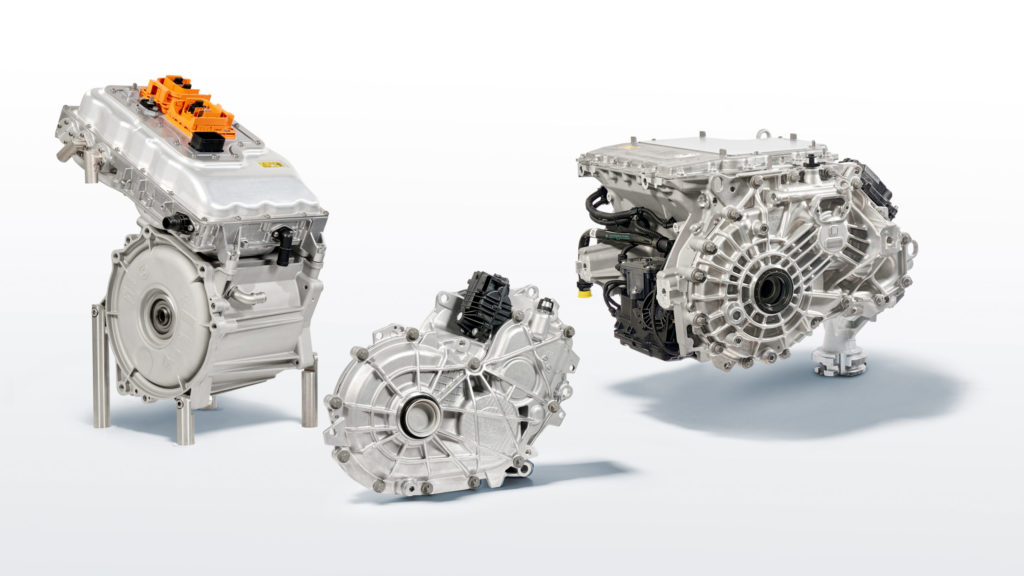The i4, iX, and iX3, along with the upcoming i7, all rely on what BMW refers to as fifth-generation eDrive units to move down the road. These eDrive units, more commonly known as electric motors, boast the unique advantage of not requiring any rare-earth metals or magnets in their construction, and instead rely on a brushed design, the origins of which can be traced back over a century. The benefits of eschewing the use of rare-earth metals (which must be mined for their extraction) are obvious, as China controls over 90% of the world’s resources in regard to the materials, like neodymium. However, with nearly every other electric vehicle on the market using brushless motors, and the latest generation of power tools offering previously unrealized capability thanks to brushless technology, one has to wonder what BMW is up to.
Brushed electric motors are typically associated with having a shorter lifespan thanks to the internal brushes generating dust and other debris, and causing wear during operation. In the old days, replacing the brushes in a tool or alternator was a part of the scheduled maintenance, but in the world of EVs and the modern automobile, such expensive servicing and downtime is considered unacceptable. To overcome these obstacles, BMW is making use of cutting-edge sealant technology to extend the lifespan of its brushed motors by encapsulating them in an enclosure which eliminates dust contamination inside the stator and wiring from the brushes making contact with the commutator.
BMW’s fifth-generation eDrive units can be effectively summarized as three-phase AC synchronous motors, and the design is said to translate to higher rpm, increased torque, and more power. Historically, electric motors using permanent magnets have been considered the most powerful, but one inherent shortcoming associated with the use of rare-earth metals in the design of an electric motor is the drag that comes with their magnetic fields remaining continuously active. To mitigate the effects of this drag, some EVs which use an electric motor with permanent magnets complement it with an asynchronous AC induction motor for the other axle, which can freewheel with far lower resistance. Another option is using a clutch to decouple the magnet-equipped motor from the drivetrain.
Developing serious power and torque doesn’t seem to be a problem for BMW’s electric motors. In the upcoming iX M60, BMW’s fifth-generation eDrive units develop up to 610 horsepower and 811 pound-feet of torque when launch mode is active. That’s enough to propel the 5,769-pound iX M60 from zero to 60 mph in just 3.6 seconds according to BMW, which also quotes an electronically-limited top speed of 155 mph.
When properly maintained and looked after, it’s not uncommon for a BMW to last at least a few hundred thousand miles across multiple owners during its lifetime. Electric vehicles come with the dual caveat of relying on both a battery pack that chemically ages and transforms over years of use, and electric motors which wear differently in comparison with internal combustion engines. These two main components are in addition to all of the other parts and systems which comprise a modern automobile, from the brakes to the drivetrain, steering, suspension, and the various electronic control systems (which are even more prevalent in EVs) that effectively connect everything and make it all happen.
This raises the question of how long a BMW EV like the i4 or iX will last before it needs a potentially major brush replacement service or a new electric motor and/or battery pack. The sealed design of the system is said to eliminate dust contamination in critical parts of the motor, but whatever fine particulate matter is yielded by the interaction of the brushes and the commutator still has to go somewhere, and either be contained or released.
Even with these current challenges, BMW is unlikely to remain the only manufacturer using brushed three-phase AC synchronous motors in its EVs for long, as numerous competitors are also looking to eliminate the need for magnets in their own electric motor designs. It’s all part of the effort to make the car of the future as sustainable as possible, and why BMW is also pursuing the sustainable extraction of lithium for batteries in South America, for example.—Alex Tock
[Photos courtesy BMW AG.]
